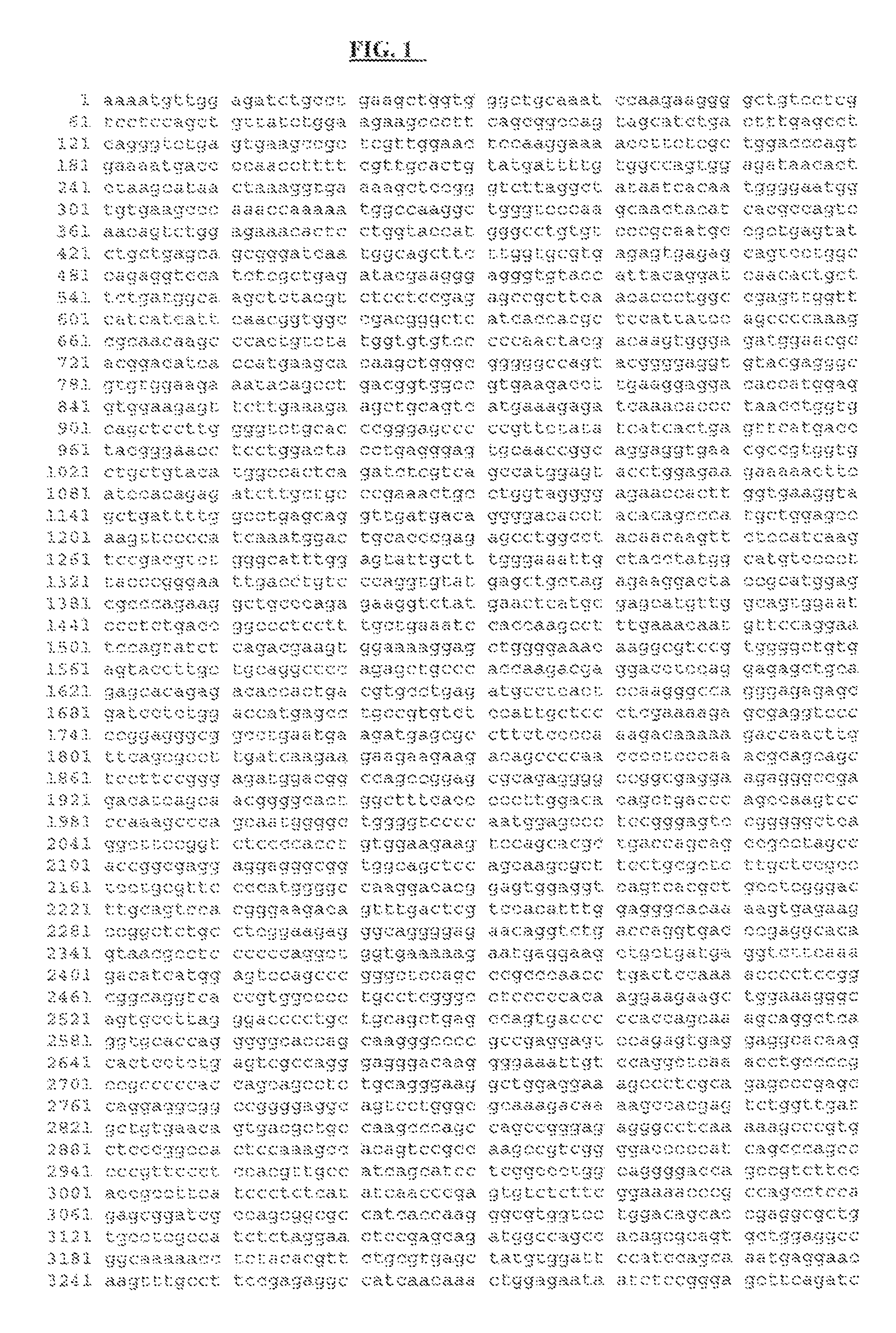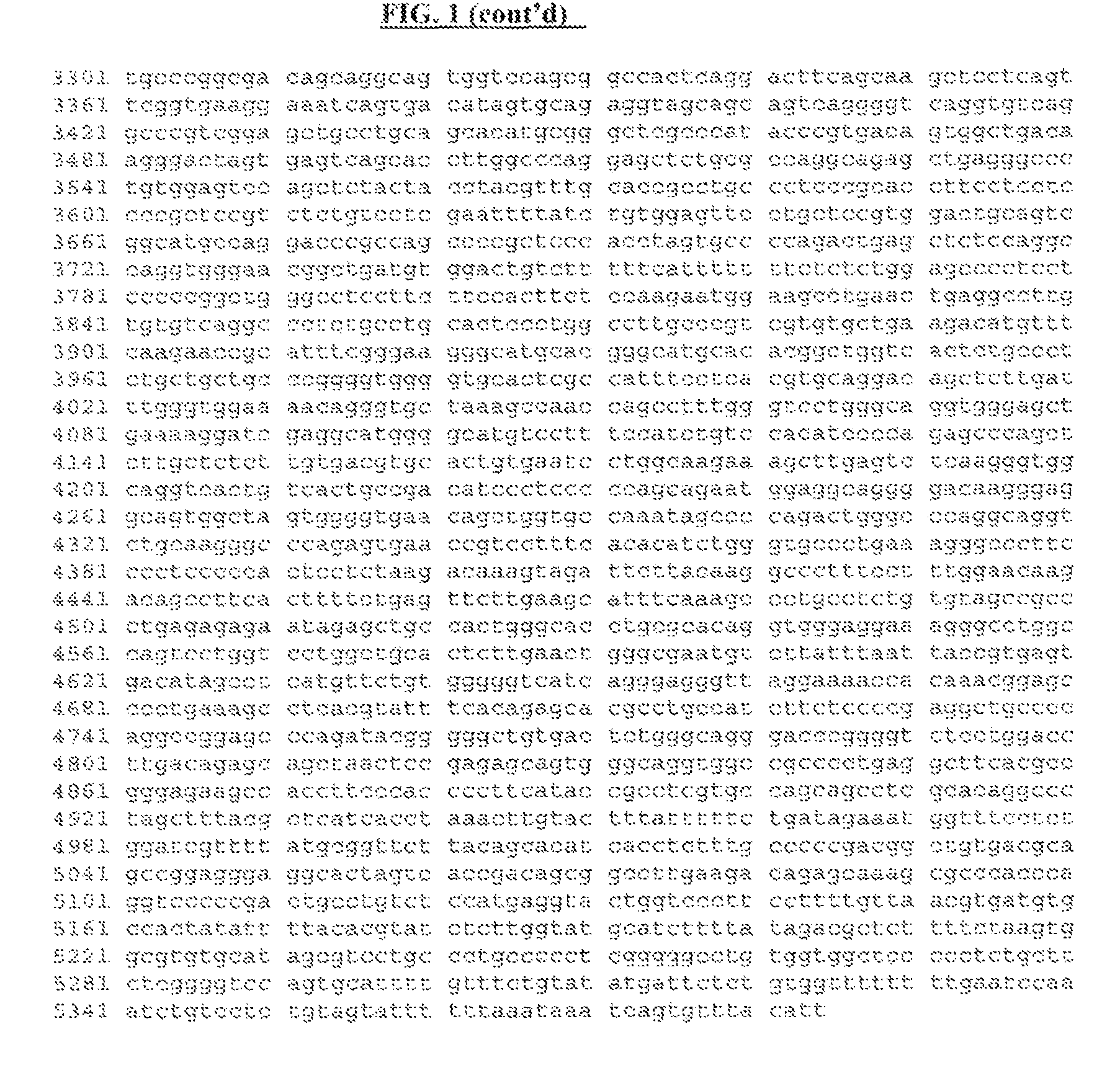BCR-ABL1 splice variants and uses thereof
a variant and kinase inhibitor technology, applied in the field of bcr-abl1 variants and resistance to kinase inhibitor therapy, can solve the problems of resistance to imatinib, other kinase inhibitors, and undifferentiated blood cells to proliferate and fail to mature, and achieve the effect of improving the stability and stability of the splice varian
- Summary
- Abstract
- Description
- Claims
- Application Information
AI Technical Summary
Benefits of technology
Problems solved by technology
Method used
Image
Examples
example 1
bcr-abl1 Mutation Detection and Analysis
[0155]Venous blood was collected from a CML patient who was resistant to more than one of the three kinase inhibitors: imatinib, nilotinib and dasatinib. The bcr-abl1 allele was amplified from the blood sample in a first round one step RT-PCR. A forward primer that anneals at bcr exon b2 (BCR F; SEQ ID NO: 15) and a reverse primer (ABL-R2; SEQ ID NO: 16) that anneals at the junction of abl exons 9 and 10 were used in first round PCR to ensure that the normal, non-translocated abl gene would not be analyzed.
[0156]The ABL kinase domain was then amplified in semi-nested PCR followed by direct sequencing using ABI / prism Big-Dye terminator cycle sequencing kit on automated capillary DNA sequencer (ABI Prism® 3100 Genetic Analyzer). The nested PCR amplified the region encoding the entire BCR-ABL tyrosine kinase domain and the activation loop using a forward primer that anneals to exon 4 (ABL-F1; SEQ ID NO: 17) and a reverse primer that anneals to th...
example 2
bcr-abl1 195INS and 243INS Splice Variants
[0158]Two mutations, resulting from alternative splicing in the ABL1 kinase domain, were detected in kinase resistant CML patients. The two splice variants, 195INS and 243INS both resulted in frameshift mutations. FIG. 1 shows the mRNA sequence for the human abl1 gene, which is the gene region in the bcr-abl1 translocation affected by these mutations. FIG. 2 shows the amino acid sequence for human ABL1 protein, which is the part of the BCR-ABL1 fusion protein that is changed in these mutations.
[0159]The 195INS splice variant carries an insertion of a 195 nucleotide sequence in the abl1 exon 4-5 junction at position 553 in FIG. 1. The 195 nucleotide sequence is derived from intron 4 of the abl1 gene. FIG. 3 shows the altered nucleotide sequence of the abl1 mRNA with the insertion underlined. The resulting amino acid sequence of the ABL1 portion of the BCR-ABL1 fusion protein changes at amino acid 184 and truncates at amino acid 187 in the ABL...
PUM
| Property | Measurement | Unit |
|---|---|---|
| temperature | aaaaa | aaaaa |
| Tm | aaaaa | aaaaa |
| pH | aaaaa | aaaaa |
Abstract
Description
Claims
Application Information
 Login to View More
Login to View More - R&D
- Intellectual Property
- Life Sciences
- Materials
- Tech Scout
- Unparalleled Data Quality
- Higher Quality Content
- 60% Fewer Hallucinations
Browse by: Latest US Patents, China's latest patents, Technical Efficacy Thesaurus, Application Domain, Technology Topic, Popular Technical Reports.
© 2025 PatSnap. All rights reserved.Legal|Privacy policy|Modern Slavery Act Transparency Statement|Sitemap|About US| Contact US: help@patsnap.com



